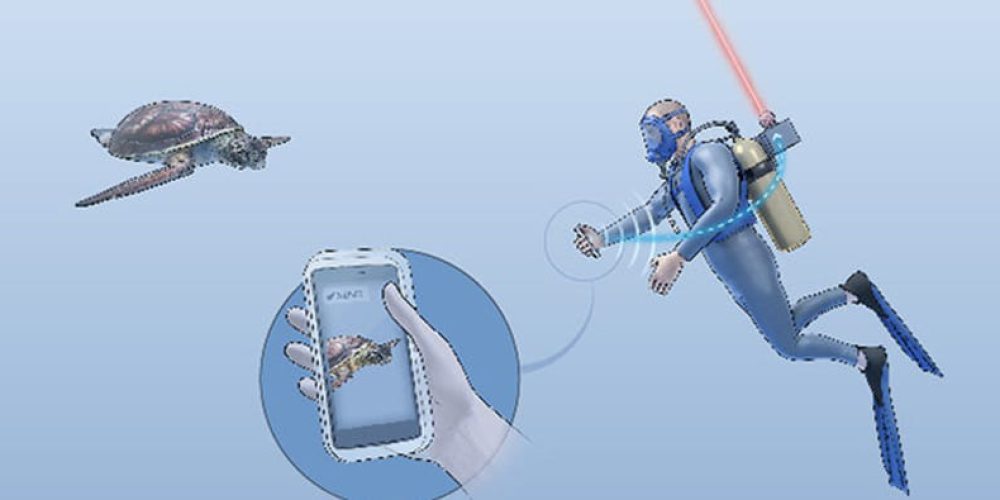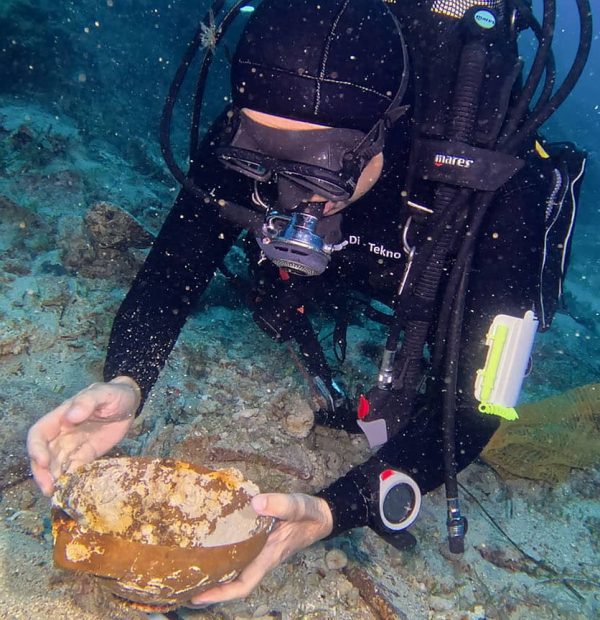Monday, 22 April 2024
Menu

People already own tens of billions of devices with Internet access. Nowadays, communication is the basis of our existence, and any information, regardless of the distance between us, travels around the globe at the speed of light. Through a fibre optic cable, of course. So it should come as no surprise to anyone that for years now there have been efforts to be able to use the benefits of a network connection underwater.
Underwater communication is currently possible using hand signals, radio signals and acoustic signals. However, all these methods have their limitations. Partly in the form of the short distances over which data can be transmitted, and partly in the form of the time required for the message to reach the addressee. It turns out that only light can save us from this darkness…
Aqua-Fi is to be the underwater version of WiFi, which will allow communication between divers and send all information to the surface in real time. Everything is to be possible thanks to light beams and the use of LEDs and lasers.
A team of researchers led by Basem Shihada has built an underwater Aqua-Fi wireless system that supports various internet services such as multimedia messaging using LEDs or lasers. LEDs provide an energy-efficient option for communication over short distances, while lasers can carry data further, but require more power.
The Aqua-Fi prototype used green LEDs, or a 520 nanometre laser, to send data from a small, simple computer to a light detector connected to another computer. The first computer converts photos and videos into a series of zeros and ones, which are converted into beams of light that turn on and off at very high speeds. The light detector detects this change and converts it back into 1s and 0s, which the receiving computer converts back into the original footage.
Researchers at King Abdullah University of Science and Technology in Saudi Arabia tested the system by simultaneously uploading and downloading multimedia between two computers several metres apart in static water. They recorded a maximum data transfer rate of 2.11 megabytes per second and an average latency of 1.00 milliseconds in both directions.
“This is the first time someone has used the internet underwater completely wirelessly,” said Shihada.
In the real world, Aqua-Fi would use radio waves to send data from a diver’s smartphone to a ‘gateway’ device connected to their equipment. Then, similar to an amplifier that extends the WiFi range of a home internet router, this gateway sends data via a beam of light to a computer on the surface that is connected to the internet via satellite.
However, Aqua-Fi will not be widely available until researchers overcome several obstacles standing in their way.
“We hope to improve link quality and transmission range with faster electronic components. The light beam must also remain perfectly aligned with the receiver in moving waters, and the team is considering a spherical receiver that can capture light from all sides. We have created a relatively inexpensive and flexible way to connect underwater environments to the global internet. We hope that one day Aqua-Fi will be as widely used underwater as WiFi is above the water surface,’ concluded Shihada.
Source: King Abdullah University of Science and Technology










Welcome to DIVERS24.COM, your daily source of scuba news, freediving, scuba diving information, and equipment reviews. Our comprehensive coverage of the dive industry from A to Z provides you with all the latest scuba news, training updates, underwater photography tips, and everything else related to scuba diving. Whether you’re a beginner or an experienced diver looking for more knowledge about scuba gear or techniques – we’ve got it covered! With our in-depth articles written by experienced divers who have been there and done that, you are sure to find exactly what you need here at Divers24.com. Dive into scuba news today!
Underwater Media Sp. z o.o.
Szafarnia 11/F8,
80-755 Gdansk, Poland
Welcome to DIVERS24.COM, your daily source of scuba news, freediving, and scuba diving information. Sign in for a weekly news update and discount coupons for dive gear and apparel.
@2023 - underwatermedia.pl. All Right Reserved. Designed and Developed by Tworzenie stron internetowych Gdansk

The Divers24 portal is currently the largest online medium treating diving in Poland. Since 2010 we have been providing interesting and important information from Poland and around the world on all forms of diving and related activities.
Contact us: info@divers24.com